Category
The camera world is abuzz with Nikon’s groundbreaking acquisition of RED, a revered name in cinema technology. This bold move marks a new chapter for Nikon, traditionally known for its dominance in photography, as it ventures into the high-end cinema camera market. For filmmakers, photographers, and creators alike, this partnership brings the promise of unprecedented innovation, combining RED’s cinematic expertise with Nikon’s imaging and technological prowess.
At the heart of this acquisition lies the potential to reshape the industry. With RED’s cutting-edge compressed raw video technology and global shutter advancements integrated into Nikon’s ecosystem, the possibilities for hybrid cameras, advanced cinema tools, and consumer-friendly features are endless. Yet, the transition is not without its challenges. Nikon must navigate preserving RED’s rebellious spirit while aligning it with its corporate vision.
What does this mean for the industry, and what can we expect in the coming years? From new cinema cameras to hybrid models for creators, Nikon’s collaboration with RED could bring innovation, accessibility, and competition to new heights. Here’s a deep dive into how Nikon’s purchase of RED will impact the camera landscape in 2024 and beyond.
The Strategic Significance of Nikon Buying RED
Let’s not sugarcoat it—this is a big deal. Nikon’s decision to buy RED isn’t just about acquiring another brand; it’s about filling a glaring gap in its lineup and asserting itself in a market it’s ignored for years: cinema cameras. For Nikon, known for its photographic legacy, stepping into the world of high-end video is like stepping onto a stage it hasn’t performed on before. RED, with its Hollywood pedigree and cutting-edge tech, is Nikon’s ticket to that stage.
Why RED?
RED is a name that resonates with filmmakers worldwide. Its cameras have been behind blockbuster movies, Netflix originals, and cutting-edge indie projects. And let’s not forget its highly coveted compressed raw video technology—a patented system that allows filmmakers to shoot insanely high-quality footage without hogging terabytes of storage. Nikon’s acquisition gives it access to these patents, which opens up exciting possibilities for its own camera lineup.
But this isn’t just about tech—it’s about credibility. Nikon has historically been a no-show in the cinema camera world, unlike Sony and Canon, which dominate both photography and filmmaking. With RED, Nikon doesn’t have to start from scratch—it gets a respected name, a suite of established products, and a foot in the door to a market it desperately needs to crack.
What’s at Stake?
Of course, this is easier said than done. RED is known for being bold, rebellious, and disruptive—a sharp contrast to Nikon’s more traditional, buttoned-up corporate identity. The risk? Nikon might dilute RED’s innovative spirit in its quest for integration. If RED becomes “just another division” of Nikon, it could alienate loyal RED users—filmmakers who appreciate RED’s willingness to push boundaries.
Nikon also needs to tread carefully with RED’s technology, particularly its raw video patent. While Nikon could use this tech to leapfrog competitors, enforcing it aggressively might make the industry hostile toward Nikon. It’s a double-edged sword.
In short, Nikon’s acquisition of RED isn’t just about adding products; it’s about making a statement. Whether this bold move redefines Nikon—or ends up as a missed opportunity—depends entirely on how Nikon handles it.
How Nikon-RED Collaboration Could Reshape the Industry
When you mix RED’s Hollywood-grade technology with Nikon’s extensive manufacturing and distribution muscle, you get a collaboration that could redefine the camera world. This isn’t just about making cool new cameras; it’s about shaking up how cameras work and who gets to use them.
Hybrid Cameras Like We’ve Never Seen Before
Imagine a Nikon camera with RED’s cinematic color science, 8K video recording, and global shutter technology. Now throw in Nikon’s renowned autofocus and in-body stabilization. That’s what cameras like the rumored Nikon Komodo Z could deliver—a tool that lets creators jump seamlessly between high-end video and still photography. Hybrid cameras that can crush both jobs have always been the dream, and this partnership might actually make it happen.
Cinematic Lenses for Z-Mount
Let’s talk lenses. RED cameras currently rely on Canon’s RF lenses, but Nikon will likely want to push its own Z-mount system. That could mean adapters for existing RF users or, better yet, a whole new line of Z-mount cinema lenses. These wouldn’t just be repurposed photography lenses; they’d be designed specifically for filmmaking—think reduced focus breathing, precise manual control, and optics optimized for cinematic storytelling.
Making High-End Tech Accessible
This is where things get exciting. RED has always been premium—its cameras often priced well out of reach for smaller studios and independent creators. Nikon, on the other hand, knows how to scale production and hit lower price points. Together, they could produce tools like the Nikon Z52 or Z80—affordable options that still pack features like compressed raw, great dynamic range, and Nikon’s signature usability.
A Word of Caution
The potential is huge, but Nikon can’t lose sight of what makes RED special: its relentless innovation. If Nikon tries to box RED into its corporate structure, it could stifle the creative edge that’s made RED a favorite in Hollywood. It’s all about balance.
New and Upcoming Nikon Cameras in 2024 and 2025
The Nikon-RED partnership isn’t just about theoretical possibilities—it’s already shaping Nikon’s camera lineup for 2024 and 2025. Here’s what we know (and can speculate) so far.
Cameras to Watch in 2024
Nikon Z73: A beast for photographers and videographers alike. This 90.75MP monster combines extreme resolution with 8K video, robust stabilization, and Nikon’s signature user-friendliness. Whether you’re shooting landscapes or filming 8K footage, the Z73 is a powerhouse.
Nikon Z90: A spiritual successor to the legendary D500, the Z90 is a speed demon. With a 33MP APS-C sensor, lightning-fast autofocus, and rugged build, it’s tailor-made for wildlife and sports shooters.
Nikon Z80: Compact but mighty, the Z80 is a versatile APS-C camera for creators who need a balance of portability and performance. Expect great video options and Nikon’s excellent stabilization tech.
Nikon Z4: A no-frills, full-frame entry-level model. Affordable and straightforward, the Z4 might skip the EVF to keep costs low, but it’s perfect for new photographers or those looking for a lightweight backup.
Nikon Z63: Designed for hybrid shooters, the Z63 offers ProRes RAW video and high-frame-rate options, making it a versatile tool for creators juggling both video and stills.
What’s Coming in 2025
Nikon Komodo Z: The headline act. Combining RED’s cinema expertise with Nikon’s design, this hybrid camera could bring 8K/120fps video to prosumers at a fraction of traditional cinema-camera prices.
Nikon Z9H: A speed-focused upgrade to the Z9, featuring global shutter technology and insane flash sync speeds for action photography.
Nikon Z52: Creator-friendly and feature-packed, this APS-C model will likely include IBIS and 4K video aimed squarely at YouTubers and small studios.
Nikon Z92: A wildlife photographer’s dream, this Z9 successor pairs global shutter with dual EXPEED 7 processors for speed and reliability.
5 Ways Nikon’s Acquisition of RED Will Change Everything
This collaboration isn’t just about new cameras—it’s about fundamentally changing what we expect from our gear. Here are five ways Nikon’s purchase of RED is set to shake things up.
Autofocus Like You’ve Never Seen Before: RED’s cameras have always been about manual precision, but Nikon’s industry-leading autofocus tech could change that. Imagine a cinema camera that nails focus during action-packed scenes—it’s a game-changer for solo creators.
Processing Power That Packs a Punch: By combining Nikon’s computational expertise with RED’s video tech, expect system-on-chip designs that handle compressed raw, real-time color grading, and advanced AI tracking seamlessly.
Cinema Lenses for Everyone: Nikon might finally give Z-mount users the cinema lenses they’ve been waiting for. Think glass that’s built for storytelling, not just photography.
Making High-End Affordable: Cameras like the Komodo Z could bring features like 8K/120fps and global shutter to creators who never thought they’d afford RED-level tech.
No More Rolling Shutter: RED’s global shutter tech could trickle down into Nikon’s lineup, eliminating the dreaded rolling shutter artifacts and making high-frame-rate video buttery smooth.
Potential Risks and Challenges
While the Nikon-RED collaboration holds immense promise, it’s not without its potential pitfalls. Merging two brands with such distinct identities and legacies is no small task, and the stakes are high. If Nikon mishandles this acquisition, it could alienate RED’s loyal user base, miss opportunities to innovate, or even disrupt its own market standing. Let’s break down the key risks and challenges.
- Preserving RED’s Identity
RED isn’t just another camera brand—it’s a symbol of innovation and disruption. Its users are filmmakers who love its cutting-edge approach, bold designs, and ability to break barriers in digital cinema. The fear among RED loyalists is that Nikon’s more corporate, structured culture might stifle the creative ethos that sets RED apart. If Nikon tries to “corporatize” RED too much, it risks turning off the very professionals and creators who made RED a household name in filmmaking.
The challenge for Nikon is clear: integrate RED’s technologies and strengths without watering down its rebellious DNA. To succeed, Nikon will need to grant RED the freedom to innovate while providing the resources and structure to scale.
- RAW Technology Monopolization
Let’s talk about RED’s famous (or infamous) compressed raw patent. This piece of intellectual property is a golden goose, allowing RED to dominate the internal raw video recording space while keeping competitors at bay. Now that Nikon owns the patent, it faces a choice: use it to advance the industry or enforce exclusivity to block competitors.
If Nikon leans on aggressive enforcement, other manufacturers like Sony, Canon, and Panasonic might find themselves limited in developing similar technology—or forced to pay licensing fees. While this could solidify Nikon’s dominance, it risks stifling innovation across the industry. Worse, it could create resentment among filmmakers who value choice and competition. Nikon needs to tread carefully to avoid becoming the villain in this story.
- Competing with Industry Giants
The cinema camera market is already crowded with heavyweights. Canon, Sony, ARRI, and even Blackmagic have established themselves as trusted names among filmmakers. Nikon is entering a battlefield where its competitors have decades of experience and loyal customers. Even with RED’s reputation on its side, Nikon has to prove that it can offer something unique—and better.
To carve out market share, Nikon must leverage RED’s Hollywood connections and cutting-edge technology while ensuring its new products stand out. This means not just matching what Canon or Sony offers but beating it in ways that filmmakers care about: image quality, usability, and price.
- Lens Compatibility Transition
Here’s a big one: RED cameras currently rely on Canon’s RF lenses—a favorite among filmmakers for their optical quality and versatility. But with Nikon’s acquisition, it’s almost inevitable that RED will transition to Nikon’s Z-mount system. While this makes sense for Nikon’s ecosystem, it’s a huge ask for RED users who’ve already invested heavily in RF glass.
To avoid alienating these users, Nikon needs to provide seamless solutions. Adapters that maintain performance or even enhance functionality will be key. Long term, Nikon must also develop a robust lineup of Z-mount cinema lenses designed specifically for filmmakers. If Nikon fails to address this transition thoughtfully, it could lose a significant portion of RED’s current user base.
- Balancing Price and Quality
One of the most exciting possibilities of this acquisition is the potential for affordable, high-quality cinema tools. But this also presents a tricky balancing act. If Nikon focuses too much on accessibility, it risks diluting RED’s premium reputation—a move that could alienate high-end professionals. On the flip side, if Nikon keeps RED’s products priced for Hollywood budgets, it misses the opportunity to attract a broader market of independent creators and prosumers.
The challenge lies in striking the right balance: delivering professional-grade tools that feel aspirational but remain within reach for the growing segment of creators who want cinematic quality on a budget.
- Operational and Cultural Integration
Finally, there’s the challenge of merging two vastly different operational cultures. RED, with its startup-like agility and willingness to take risks, could clash with Nikon’s traditional, corporate approach to product development. Nikon will need to protect RED’s ability to innovate while bringing in the resources and stability that come with being part of a larger organization.
Mismatches in operational style could lead to delays, inefficiencies, or, worst of all, a loss of the boldness that makes RED products special. The key will be maintaining RED’s agility while scaling its impact through Nikon’s global network.
The Nikon-RED partnership is full of potential, but it’s also fraught with challenges. From preserving RED’s unique identity to navigating the RAW patent controversy, Nikon has a fine line to walk. Success will depend on Nikon’s ability to integrate RED’s strengths without losing what makes it special—and on its willingness to collaborate with, rather than compete against, the wider camera industry.
What This Means for Creators and Filmmakers
The Nikon-RED partnership could be a game-changer for creators and filmmakers, offering innovative tools that bridge the gap between high-end cinema equipment and consumer-friendly cameras. Here’s how this collaboration might impact those behind the lens.
- Innovations for Creators
By integrating RED’s cinematic expertise with Nikon’s imaging capabilities, creators can expect hybrid tools that excel in both photo and video. Cameras like the rumored Nikon Komodo Z may offer 8K/120fps video, advanced autofocus, and global shutter technology—all within a more accessible package. These features would empower filmmakers and photographers alike to achieve professional results without the steep learning curve of traditional cinema cameras.
- Increased Accessibility
The potential for affordable cinema tools is one of the most exciting aspects of this partnership. Models like the Nikon Z52 and Z80 could deliver RED’s renowned compressed raw video technology and Nikon’s intuitive design at prosumer price points. Independent filmmakers, YouTubers, and smaller production studios stand to benefit the most, gaining access to high-quality tools that were previously out of reach.
- Hybrid Cameras for Versatile Storytelling
The fusion of RED’s video expertise and Nikon’s photographic strengths could lead to hybrid cameras that cater to a broader range of needs. For creators who produce both stills and video content, these tools promise unmatched versatility, eliminating the need for separate equipment.
- Potential Limitations
While the opportunities are immense, some limitations may hinder accessibility:
Pricing Concerns: Cameras like the Komodo Z or Z9H might still be priced at a premium, catering more to professionals than hobbyists.
RAW Technology Restrictions: If Nikon enforces exclusivity over RED’s compressed raw patent, creators using non-Nikon brands may face fewer options or higher costs for similar capabilities.
- Expanded Ecosystem
Nikon’s global distribution network and manufacturing scale could introduce RED’s innovations to a much wider audience. This expanded reach ensures not only that creators gain access to better tools but also that the ecosystem of accessories and lenses grows, supporting diverse production needs.
In conclusion, Nikon’s acquisition of RED holds significant promise for creators and filmmakers. The collaboration could make advanced tools more accessible while delivering professional-grade performance for both prosumers and industry veterans. However, the success of this vision depends on Nikon’s ability to balance innovation, affordability, and openness to the broader creative community.
Some final thoughts
Nikon’s acquisition of RED signals a pivotal moment for the camera industry. By combining Nikon’s photographic expertise with RED’s cinematic innovation, the partnership offers the promise of transformative advancements in both photography and videography.
As Nikon ventures into the high-end cinema market, challenges remain. Preserving RED’s rebellious spirit, addressing lens compatibility concerns, and balancing affordability with quality will be critical to ensuring the success of this collaboration. At the same time, Nikon’s expanded resources and distribution networks could bring RED’s technology to a wider audience than ever before, opening doors for independent filmmakers, YouTubers, and smaller studios.
The camera industry is on the brink of significant change. With the rumored lineup of Nikon cameras in 2024 and 2025, including innovations like the Nikon Komodo Z, Nikon’s collaboration with RED could set new standards for hybrid tools and professional-grade equipment. Whether you’re a filmmaker, photographer, or content creator, the future of Nikon and RED’s partnership is one worth watching—and one that could shape the industry for years to come.
Written by Rafi Ovanesyan
Featured
-
 Duracell Digital Camera Battery For Nikon EN-EL12, ENEL12, 3.7V, 1000 m/Ah
Duracell Digital Camera Battery For Nikon EN-EL12, ENEL12, 3.7V, 1000 m/Ah 39,90 €Original price was: 39,90 €.29,99 €Current price is: 29,99 €. -
 Sony FE 50mm f/1.2 GM Full Frame Prime Photo Lens for Sony E Mount 2.499,00 €
Sony FE 50mm f/1.2 GM Full Frame Prime Photo Lens for Sony E Mount 2.499,00 € -
 Sony FE 24-70mm F2.8 GM II Full Frame Zoom Photo Lens for Sony E Mount 2.799,00 €
Sony FE 24-70mm F2.8 GM II Full Frame Zoom Photo Lens for Sony E Mount 2.799,00 € -
 FEELWORLD LUT7 7 inch IPS Screen, FHD 1920x1200, 2200 nits, HDMI, 4K, Touch Screen, Camera Field Monitor 429,90 €
FEELWORLD LUT7 7 inch IPS Screen, FHD 1920x1200, 2200 nits, HDMI, 4K, Touch Screen, Camera Field Monitor 429,90 €
Latest
-
 Duracell Digital Camera Battery For Olympus BLN-1, BLN1, 7.4V, 1140m/Ah
Duracell Digital Camera Battery For Olympus BLN-1, BLN1, 7.4V, 1140m/Ah 44,90 €Original price was: 44,90 €.39,90 €Current price is: 39,90 €. -
 Nikon Ai-s Nikkor 35mm f/2.8 Wide Angle MF Lens (Japan) - Used 149,00 €
Nikon Ai-s Nikkor 35mm f/2.8 Wide Angle MF Lens (Japan) - Used 149,00 € -
 Canon EF 75-300mm f4-5.6 III Full Frame Photo Lens (Open Box)
Canon EF 75-300mm f4-5.6 III Full Frame Photo Lens (Open Box) 299,00 €Original price was: 299,00 €.279,00 €Current price is: 279,00 €. -
 Camera Battery Charger for Nikon ENEL15, EN-EL15, D500, D600, D610, D800, D800E, D810, D810A, D850, D7000, D7100, D7200, D7500, Z6, Z7, 1 V1
Camera Battery Charger for Nikon ENEL15, EN-EL15, D500, D600, D610, D800, D800E, D810, D810A, D850, D7000, D7100, D7200, D7500, Z6, Z7, 1 V1 24,90 €Original price was: 24,90 €.19,99 €Current price is: 19,99 €.











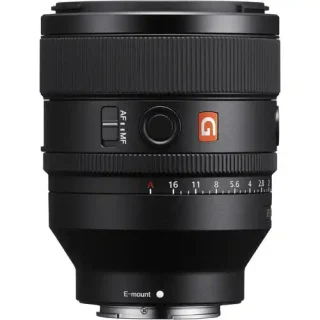
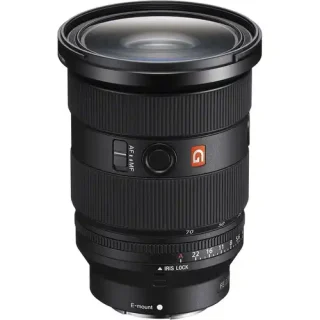
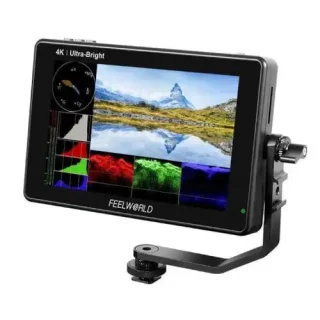

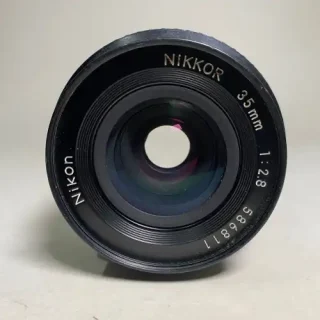
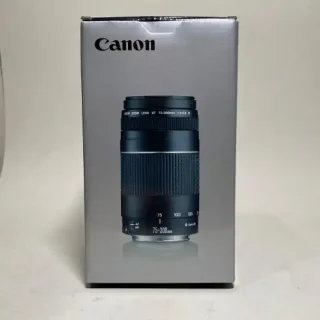



















Leave a Reply
You must be logged in to post a comment.